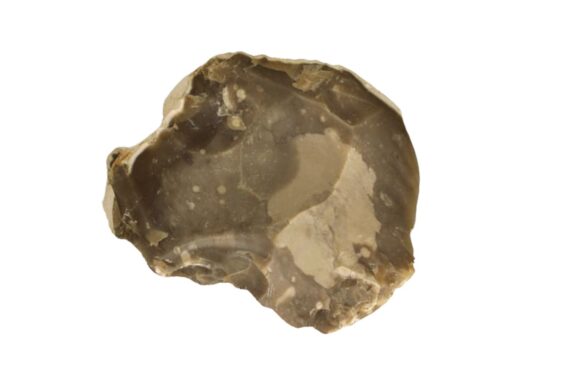Flint

Flint rock, also known as chert, is a sedimentary rock that has been used by humans for thousands of years to make tools and weapons. It is found all over the world and is particularly common in areas that were covered by ancient seas. In this article, we will take a closer look at the texture, structure, and formation of flint rock.
Texture Flint
Flint rock is known for its smooth, glass-like texture. This texture is a result of the microscopic crystals that make up the rock. These crystals are made of silica, which is a mineral that is also found in sand and quartz. The crystals in flint rock are very small and tightly packed together, which gives the rock its smooth texture.
Another characteristic of flint rock is its conchoidal fracture. This means that the rock breaks in a way that produces curved surfaces that resemble the inside of a seashell. This fracture pattern is important because it allows flint to be shaped into sharp edges for use as tools and weapons.
Structure Flint
The structure of flint rock is closely related to its texture. As mentioned earlier, the crystals in flint rock are very small and tightly packed together. This gives the rock a dense, uniform structure. However, there can be variations in the way that the crystals are arranged within the rock.
Flint can be found in layers that are several meters thick, or as nodules that are only a few centimeters in diameter. The layers are formed when silica-rich sediment is deposited on the sea floor. Over time, this sediment is compacted and cemented together to form the layer of flint rock.
The nodules are formed when silica-rich water seeps into cracks and cavities in other rocks. As the water evaporates, it leaves behind layers of silica that eventually harden into flint nodules.
Formation Flint
The formation of flint rock is closely tied to the history of the Earth. Flint is formed from silica-rich sediment that is deposited on the sea floor. This sediment is made up of tiny particles of silica that have been eroded from other rocks and carried into the ocean by rivers and streams.
Over time, the sediment is compacted and cemented together to form layers of flint rock. This process can take millions of years. As the layers of flint rock are exposed to the elements, they can weather and erode, revealing the flint nodules that are hidden inside.
Conclusion
Flint rock is a fascinating and important material that has been used by humans for thousands of years. Its smooth texture, conchoidal fracture, and dense structure make it ideal for use as tools and weapons. Understanding the texture, structure, and formation of flint rock can help us appreciate its beauty and utility.
